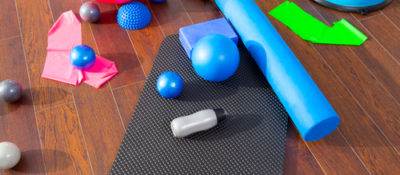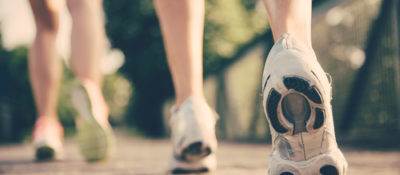Helen Ries is the Clinic Owner and a Physiotherapist at Sitka Physio and Wellness who specializes in Orthopaedic Manual Therapy and Running Assessments.
With minimalistic shoe sales soaring to $500 million a year in the U.S., a debate is emerging over the value of going barefoot. Will it improve performance? Will it prevent, or cause, injuries? IMPACT went to expert advocates for and against this emerging phenomena. The jury is still out, but what side do you favour?
Does Barefoot / Minimalist Running Really Improve My Movements?
Recreational and elite runners, as well as their coaches and health professionals, are curious about minimalist running. Is it a trend or is it a new, progressive way of terrestrial locomotion allowing humans to move rapidly on foot? The research is still emerging, but anyone thinking about starting to run, improving his or her performance or overcoming an injury should be considering this phenomenon.
Barefoot/minimalist running encourages a forefoot/midfoot contact, versus the traditional running shoe stride that stimulates a heelstrike. The research says a forefoot strike decreases peak loads and torque at the hip and knee compared to a heelstrike. Forefoot runners have more ankle range of motion, allowing for more elastic recoil in the foot/ankle complex and an ability to produce more dynamic strength.
Harvard professor Daniel Lieberman found that heelstrikers are twice as likely to sustain an overuse injury. Traditional running shoes have an increased heel height that encourages a runner to contact first with their heel. University of British Columbia professor Jack Taunton found wearing a minimalist shoe (the Nike Free) improved intrinsic muscle strength, decreased the incidence of ankle sprains and improved dynamic balance.
There are 26 bones, 33 joints and 19 muscles in the human foot, all of which are designed to move. Why would we want to restrict the mobility and dynamism of the natural foot by wearing a restrictive and highly supportive shoe?
While Lieberman’s research tends to focus on evolutionary data around pure barefoot runners, and may not be directly applicable to our paved cities and sedentary culture, a move to a more minimalist shoe is simply a more natural way of interacting with the ground. If you’re not ready to interact with the ground and withstand the forces that your body imparts in doing so, then maybe you should choose a fitness activity other than running.
Does barefoot running cause injuries or prevents them?
A question that always arises in the barefoot debate is whether it contributes to, or prevents, injuries.
Injuries occur regardless of footwear, or lack thereof, generally developing because of a mismanagement of “the quantification of mechanical stress,” says running injury expert Blaise Dubois. If a runner increases their load (a combination of speed, distance, time, cushion/lack of cushion) too much, too soon, without allowing the proper time for tissue adaptation, they will create a stress response in a given tissue (also known as a repetitive strain injury). The science suggests rearfoot striking causes more injuries. By moving into a minimalist shoe, there should be an inherent reduction in the incidence of injuries because the foot is allowed to move more like it was designed to move.
Says Jeff Pisciotta, of Nike’s sports research lab: “During propulsion and landing, [barefoot runners] have far more range of motion in the foot and engage more of the toe. Their feet flex, spread, splay and grip the surface, meaning you have less pronation and more distribution of pressure.”
Minimalist running is idealistic. Sometimes, it is simply not possible for a person to run unless they are in a traditional cushioned shoe. But, unless you suffer neurological paralysis, have had a traumatic foot injury causing deformity or are in the acute phase of a foot injury, there’s no reason you shouldn’t be striving for the minimalist ideal.



